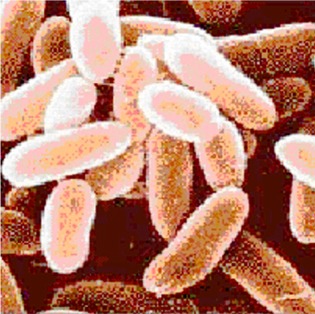Anthrax as Biological Weapon
- Anthrax is an imperfect weapon because it is hard to obtain and disperse.
- It is extremely difficult to transform the Bacillus anthracis into a weapon for mass destruction.
- It is one thing to have anthrax and another to infect people with it.
- To make anthrax into a powder needs sophisticated technology.
- You cannot contact anthrax by touching a door-nob or stair railing or any other object.
- Anthrax spores can survive for almost 24 hours in the air when spread as airborne aerosol. The spores are killed by the sunlight. They may persist for years if buried in the soil. Although the anthrax spores can contaminate the building surfaces for several hours, they would adhere to the surfaces and would be unlikely to re-aerosolised to cause pulmonary infection.
- To make the anthrax stain into its most leathal form – pulmonary anthrax the spores have to be of exact size. B. anthracis spores as airborne particles < 5 um in diameter need to be deposited directly into the alveoli or alveolar ducts ( the remote location in the lung ) of the lungs. If the spores are too small they would be exhaled out during breathing and would not be able to do any damage. Larger size spores will not be inhaled and would not reach the exact site of the lung to start the disease process.

Anthrax spores
- Bombs carrying anthrax may not be effective in dispersing the germs because the explosion would destroy them.
- Spreading the bacterium with aerosol is a hard task. Unless it is in the form of spores it cannot be sprayed. In this context the attempt by Aum Shinrikyo cult of Japan to kill people traveling in the metro trains by spraying mist of Anthrax can be mentioned. The attempt did not succeed. The members of this cult squirted the agent in its liquid form. In this form the bacteria is less likely to reside in the victims’ lungs.
